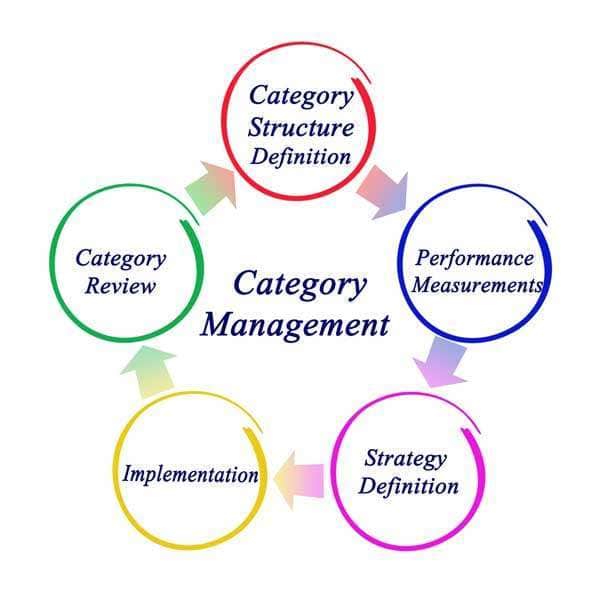-
Here’s How Category Management Solutions Can Improve Procurement In Your Company
The procurement process can get pretty messy, especially as your organization grows. If your company has a lot of orders going through the procurement department, it’s very easy for things to get disorganized. One way to help combat this problem and take back control of the procurement process is by using category management tools.
Software category management solutions help break down procurement into more manageable sections. Using this strategy can also give you increased control over the whole purchasing process. This often helps your company save money and procure better quality goods.
Adopting procurement category management can be useful in all types of companies. No matter what types of goods you’re purchasing, category management lets you tap into more opportunities to turn the procurement process into an asset for your company. Keep reading to learn more about category management software tools and how they can improve procurement.

What Is Category Management?
Back in the 1980s, a university professor named Brian F. Harris started working with category management as a method for making procurement a more strategic process. In 1997, he released an 8-step model for category management:
- Define the Category
- Assess the Category’s Role
- Track Performance
- Set Objectives and Targets
- Build Strategies
- Designate Category Tactics
- Implement
- Review
Harris’s ideas are still used today, though many companies opt for a shorter, more streamlined version of the 8-step model. Basically, the goal of category management is to sort purchases into related categories. Common categories include the price of items, types of goods, frequency or volume of purchase, and suppliers.
Procurement category management improves efficiency in supply chains. Category management tools organize procurement so you can focus on specific areas of spend group-by-group. It lets category managers conduct market and pricing analyses that are specific to each item category. Leveraging this detailed, specific information when making procurement decisions can give your company a better ROI than you get with traditional purchasing models.
Why Bother with Category Management?
Category management is becoming a popular part of procurement. Some even see it as essential. If you want to optimize your procurement and make the process strategic, experts recommend implementing category management.
But why?
Category management is about more than just sorting what your company purchases into groups. It involves taking a strategic approach to developing, assessing, and monitoring procurement in specific supplier categories.
Since each category requires individualized market intelligence, sourcing strategies, and supplier management, breaking procurement into categories makes things more manageable. It also makes it easier to monitor seller performance and to develop a two-way relationship with suppliers. Getting this sort of deeper insight into your suppliers also helps with assessing and managing supply chain risk, which is essential when dealing with post-pandemic supply chain disruptions.
How Do You Manage Categories?
In a procurement department using category management, employees are assigned to each category as the category manager. In large organizations, you might have several product managers or management teams working in different categories. This process is made simple by using business process automation (BPA) software that supports category management tools in procurement.
Here’s an example of what the category management process can look like using a simplified version of the 8-step process mentioned earlier:
- Categorize—Group similar types of items you need to procure together. Examining spend trends, business goals, forecasting demands, and stakeholder analysis can help with this.
- Measure—In this step, it’s time to measure and analyze data across your market. Examine trend analysis, procurement market analysis, and cost structure analysis related to each category.
- Define—Strategize a defined plan for your procurement activities, evaluate the time required, and document your proposed strategy. Also, define key performance indicators you’ll use to measure supplier performance. If necessary, put together a team to handle category-specific procurement.
- Implement—Put your plan into motion and continue monitoring sourcing activity progress. Evaluate current category management practices against success measures and savings initiatives in your department.
- Review—Continue to evaluate suppliers and category management based on previously defined key performance indicators. You’ll also monitor risks in your categories’ supply chains.

Where Does Category Management Help?
Category management within procurement speeds up the whole purchasing process. This is especially true when you’re using procurement software to support implementing categories in purchasing. BPA software streamlines purchasing and makes it easy to sort purchases into categories. It lets employees in the purchasing department stop worrying about the more routine, mundane parts of their job. This frees up time to focus on more value-added tasks like collaborating with suppliers.
Implementing category management also gives you several benefits that come from consolidating and centralizing spend. It’s easier to track, log, and report data related to purchasing. Once again, automation software helps with this by automatically logging important data in an easily accessible format. You’ll also have the data you need to make more strategic spending decisions and long-term plans.
Category management also makes it easier to get an in-depth understanding of each vendor. That can improve your relationships with suppliers. It also helps you identify any operational risks associated with a supplier and helps you figure out what you’re looking for in new suppliers.
Another advantage is that you can leverage the expertise of category managers more effectively. For example, you could put someone with IT experience in charge of managing the IT hardware and software category. That means tech purchasing decisions will be made by someone who knows what they’re doing and can make sure your company is getting the best value.
What Can’t It Do?
Category management is a fantastic tool to use in your procurement system. It is not, however, a way to fix all the problems that might come up in a procurement department. It’s a good idea to get things running as efficiently as possible in the procurement department before implementing category management.
For example, if your company is dealing with any of the 10 most costly procurement mistakes (click here to read about how to avoid them), you’ll still need to address those issues. If you’re still using a paper-based process or trying to get clunky, outdated software to work, make plans to digitize procurement strategically. By streamlining and improving your purchasing process, you’ll lay the groundwork for category management.
How Can You Implement Category Management?
One of the best ways to create a purchasing system that really works for your company is through business process automation software. A good BPA system can help you define and solve procurement problems. It also gives you the tools that you need to successfully implement procurement category management.
As you consider implementing category management, clear communication about goals is key to getting support from stakeholders in the company. Do your research about the benefits of category management so you can convince people it’s cost-effective and offers good ROI. Category management isn’t the best fit for every company, but if it’d work in your business, you should be able to come up with a variety of reasons why it will help. Then, outline a plan for defining categories and implementing category management.
Using category management to improve procurement works a lot better if you already have a strong procurement system in place. NextProcess’ Purchase Order Module can increase the accuracy of your procurement, provide better oversight into spend, and make the entire process more user-friendly. Plus, you can configure our system to fit your company’s exact needs. It offers flexible, user-friendly software for category management. To learn more, contact us today. We can answer any questions you have and schedule a free demo.